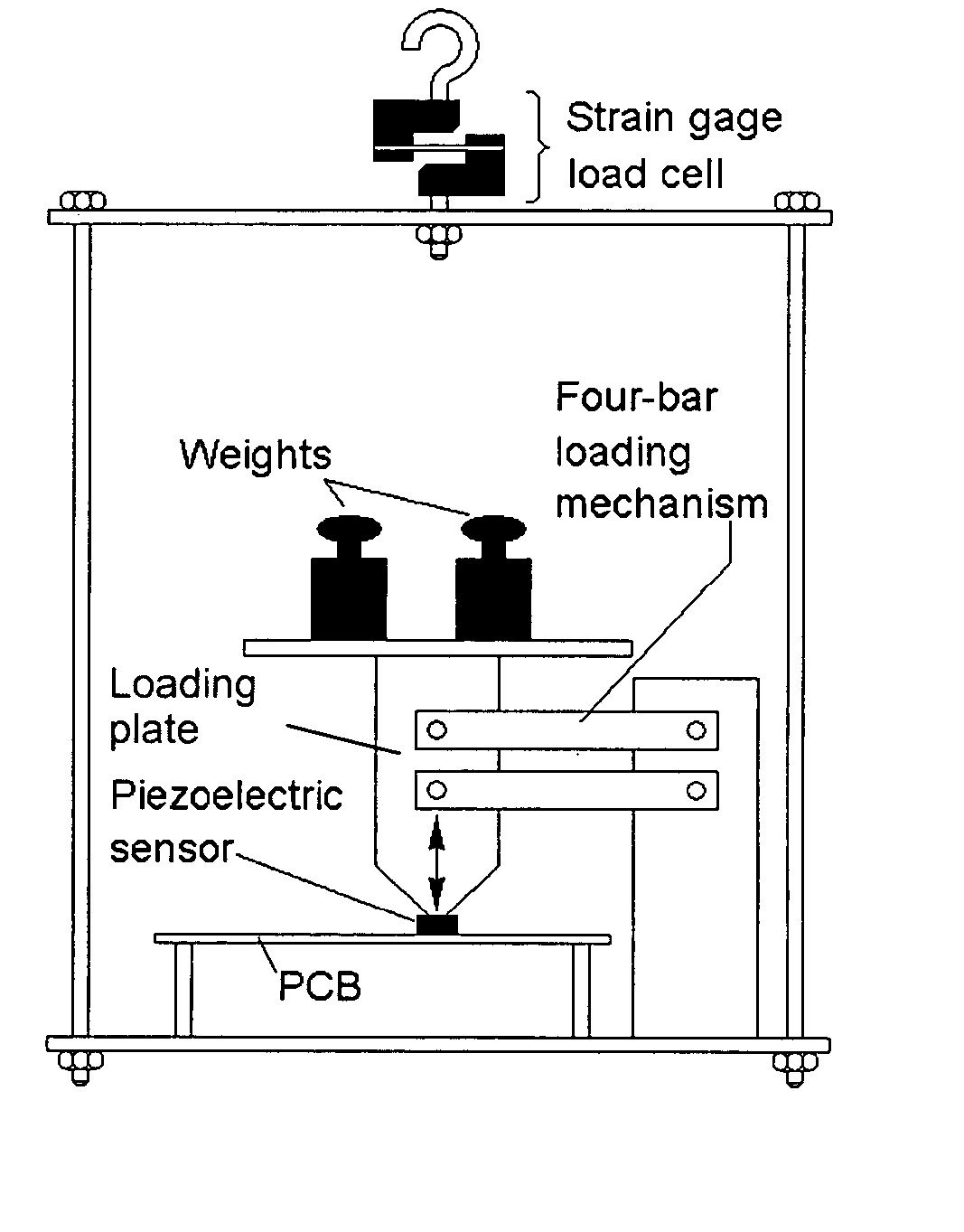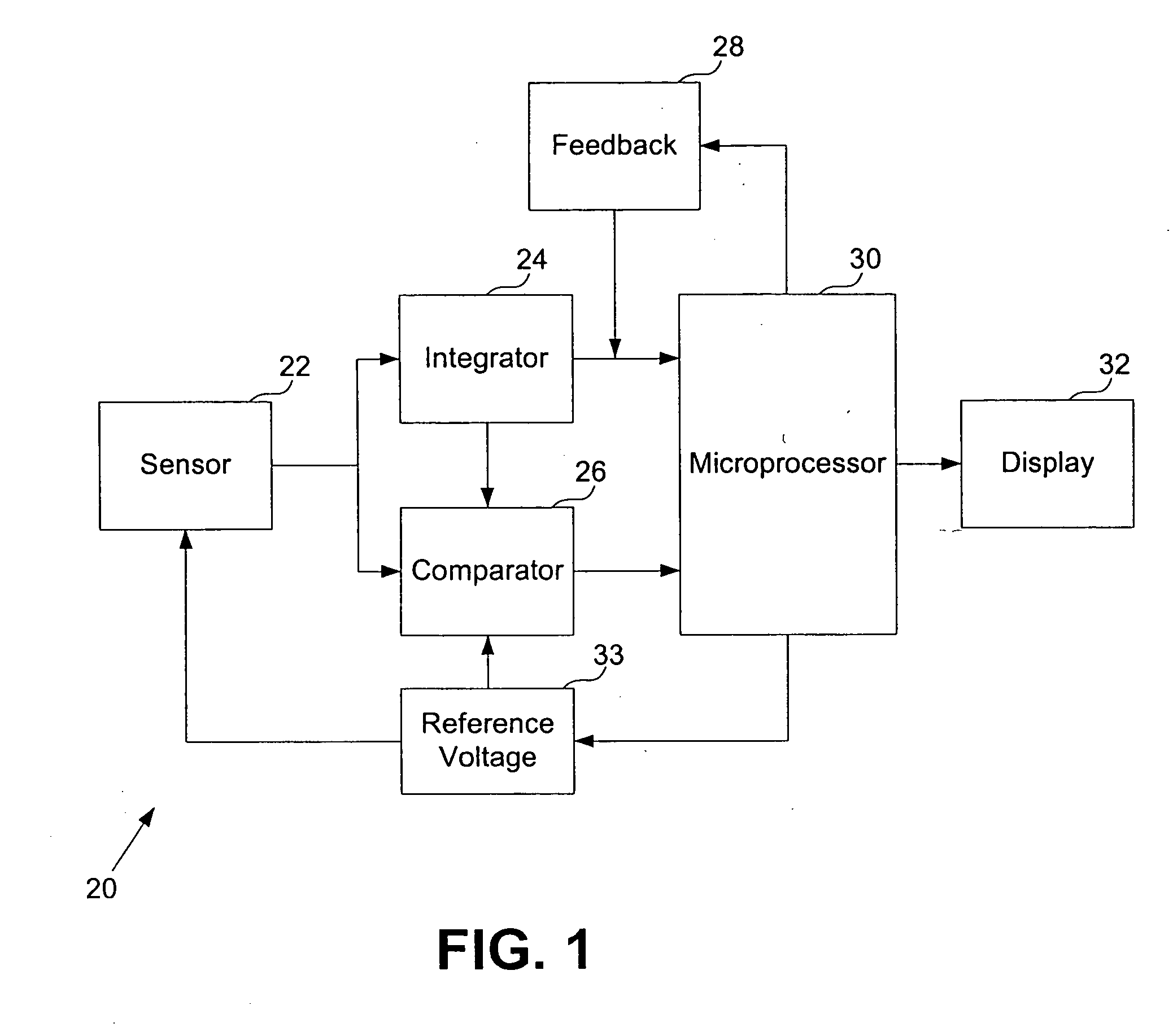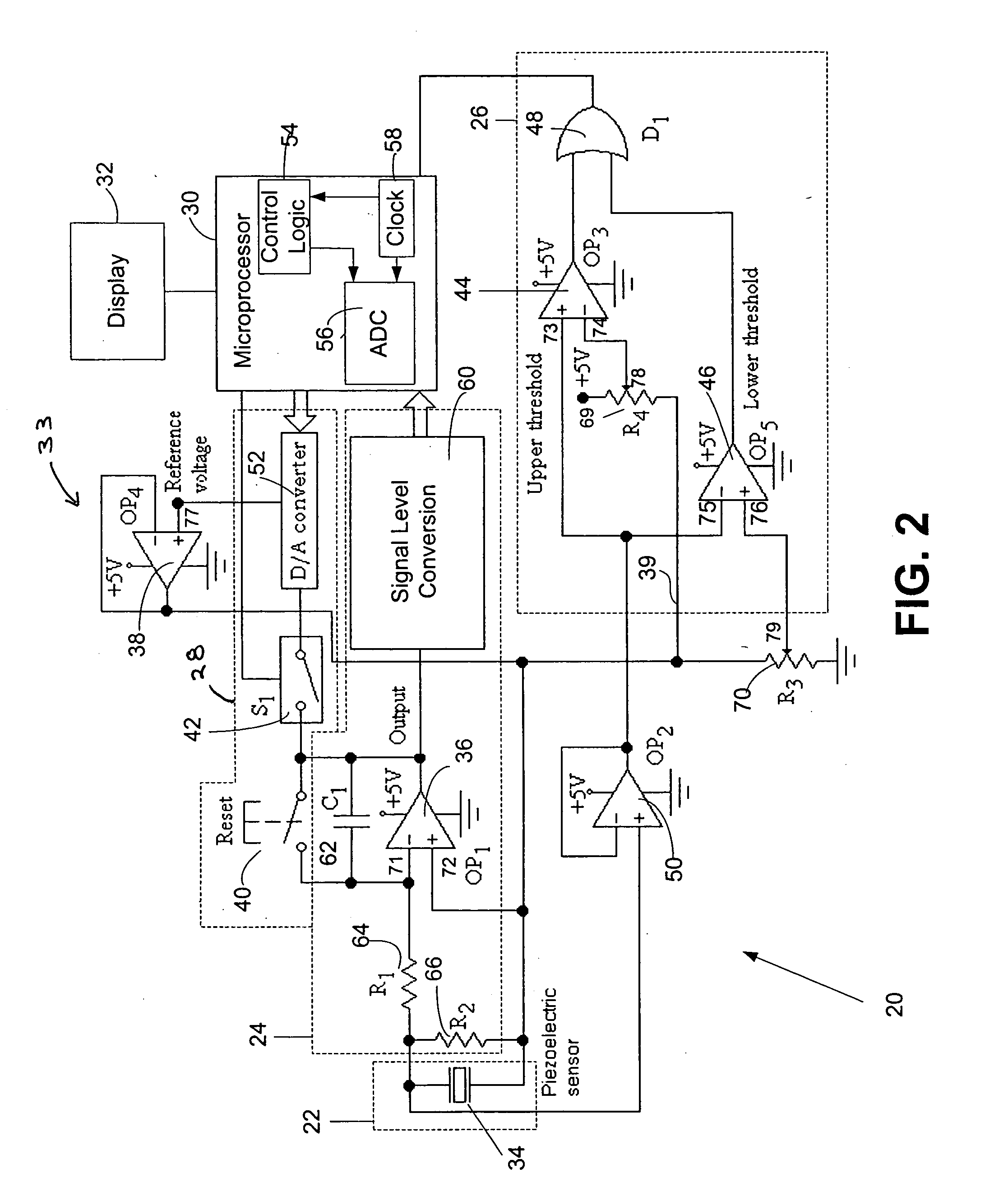System and method for load sensing using piezoelectric effect
a piezoelectric effect and load sensing technology, applied in the field of force and strain sensors, can solve the problems of limiting the flexibility of strain gauge-based load measurement, difficulty in attaching strain gauge sensors to objects or components to be measured, and difficulty in reducing the flexibility of application, so as to improve the overall operation efficiency and safety, reduce costly machine downtime, and improve enterprise-wide decision-making, scheduling and productivity.
- Summary
- Abstract
- Description
- Claims
- Application Information
AI Technical Summary
Benefits of technology
Problems solved by technology
Method used
Image
Examples
example 1
[0081] As illustrated in FIG. 6, a piezoelectric sensor system in accordance with this invention, was mounted on a printed circuit board (PCB). The sensor itself was subject to the force application by means of standard weights, through a four-bar rectangular planar mechanism, which constrained the motion of the scale plate holding the weights to a vertical linear displacement. The plate supporting the PCB and the four-bar mechanism was suspended by wires. For comparison and reference purpose, a strain gage load cell of the prior art was installed along the suspension hook. Due to the series mechanical connection, the strain gage load cell measured the same load as the piezoelectric sensor, thus realizing a “back-to-back” calibration basis. Output signals from the two load measuring systems (strain gage and piezoelectric sensor) are comparatively shown on the plots that follow.
[0082] The strain gage circuit was first calibrated using standard weights before the experiment. As a res...
example 2
[0087] Constant Load Test
[0088] The plots of FIG. 7 shows the circuit output when weights of 200 g (left) and 500 g (right) were applied to the sensor. The piezoelectric sensor (middle) was able to deliver a constant voltage output corresponding to the weight applied. The output is comparable to that of the strain gage sensor (top). The bottom portion of the figure illustrates the circuit trigger.
example 3
[0089] Toggled Load Test
[0090] The toggled load tests were aimed at demonstrating the repeatability of the measurement using the inventive piezoelectric sensor / system.
[0091] As seen in FIG. 8, the piezoelectric circuit has shown good repeatability when known weights (220 g, left, and 400 g, right) were repeatedly placed on the sensor, taken away, and then put back on again. Comparing to the strain gage circuit output, the piezoelectric sensor has shown less to much less spikes at the load-unload interfaces.
PUM
| Property | Measurement | Unit |
|---|---|---|
| voltage | aaaaa | aaaaa |
| output voltage | aaaaa | aaaaa |
| frequency | aaaaa | aaaaa |
Abstract
Description
Claims
Application Information
 Login to View More
Login to View More - R&D
- Intellectual Property
- Life Sciences
- Materials
- Tech Scout
- Unparalleled Data Quality
- Higher Quality Content
- 60% Fewer Hallucinations
Browse by: Latest US Patents, China's latest patents, Technical Efficacy Thesaurus, Application Domain, Technology Topic, Popular Technical Reports.
© 2025 PatSnap. All rights reserved.Legal|Privacy policy|Modern Slavery Act Transparency Statement|Sitemap|About US| Contact US: help@patsnap.com



